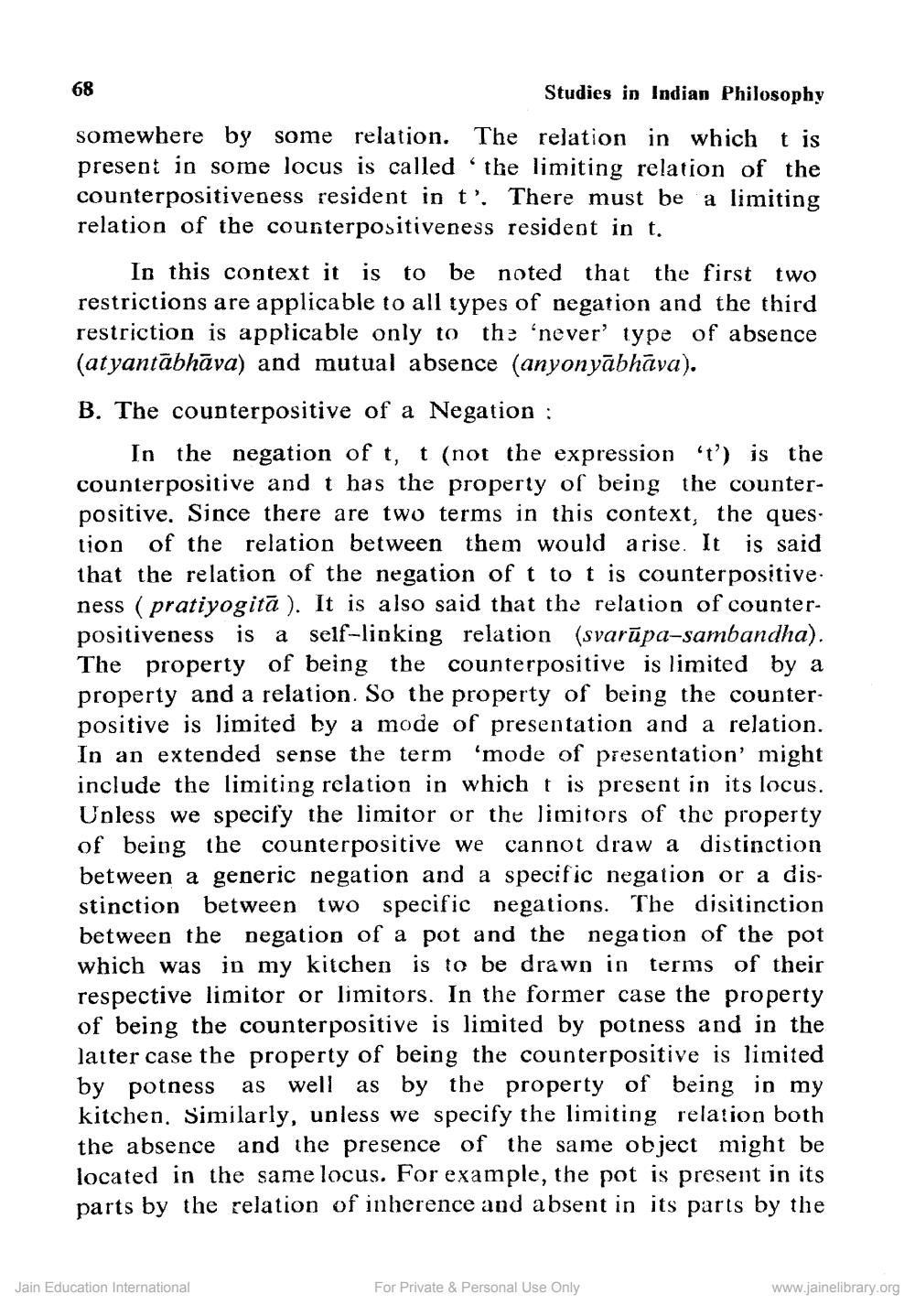________________
Studies in Indian Philosophy somewhere by some relation. The relation in which t is present in some locus is called the limiting relation of the counterpositiveness resident in t'. There must be a limiting relation of the counterpositiveness resident in t.
68
In this context it is to be noted that the first two restrictions are applicable to all types of negation and the third restriction is applicable only to the 'never' type of absence (atyantābhāva) and mutual absence (anyonyābhāva).
B. The counterpositive of a Negation:
In the negation of t, t (not the expression 't') is the counterpositive and t has the property of being the counterpositive. Since there are two terms in this context, the ques tion of the relation between them would arise. It is said that the relation of the negation of t to t is counterpositive. ness (pratiyogita). It is also said that the relation of counterpositiveness is a self-linking relation (svarūpa-sambandha). The property of being the counterpositive is limited by a property and a relation. So the property of being the counterpositive is limited by a mode of presentation and a relation. In an extended sense the term 'mode of presentation' might include the limiting relation in which t is present in its locus. Unless we specify the limitor or the limitors of the property of being the counterpositive we cannot draw a distinction between a generic negation and a specific negation or a disstinction between two specific negations. The disitinction between the negation of a pot and the negation of the pot which was in my kitchen is to be drawn in terms of their respective limitor or limitors. In the former case the property of being the counterpositive is limited by potness and in the latter case the property of being the counterpositive is limited by potness as well as by the property of being in my kitchen. Similarly, unless we specify the limiting relation both the absence and the presence of the same object might be located in the same locus. For example, the pot is present in its parts by the relation of inherence and absent in its parts by the
Jain Education International
For Private & Personal Use Only
www.jainelibrary.org




